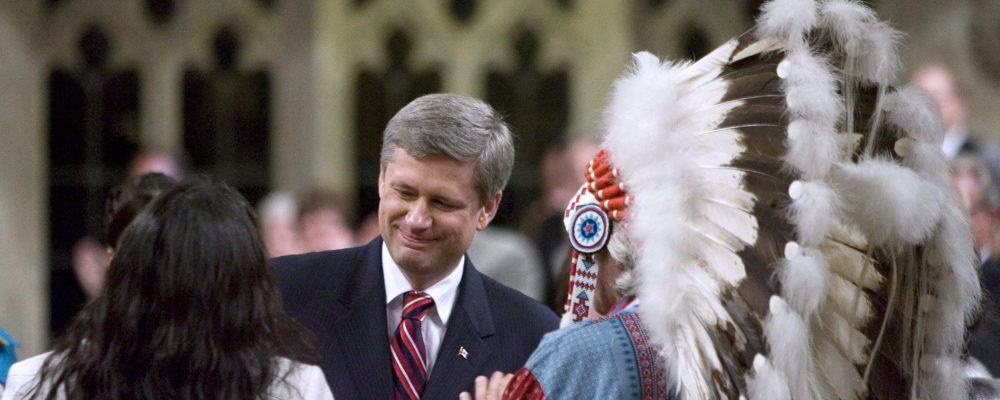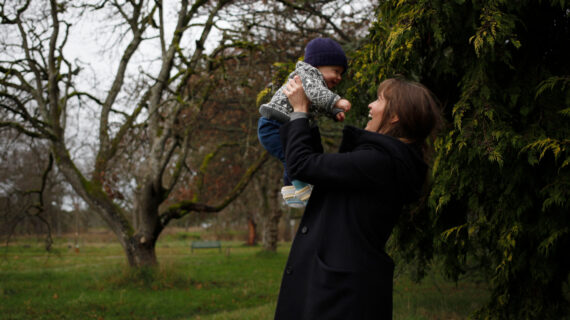Many Canadians are embracing the moment to stand with Indigenous communities as they uncover the truths of the unmarked graves of Indigenous children at the sites of former residential schools and question what can be done to remedy an awful history.
Others are opting to focus on the supposed positives of the policies that formed the schools, claiming that policymakers “thought they were doing the right thing,” and that, “the residential schools for native children were devised to take the young from the grinding poverty of their early years and equip them to participate in society,” and that, “[t]he goal was, in its bumbling Victorian colonialist manner, a positive one […].”
And others yet have taken to tearing down statues of Conservative leaders and burning down churches.
MORE SIGNAL. LESS NOISE. THE HUB NEWSLETTER.
In the best of times, reconciliation — which requires focused and arduous effort to bust through a complex, outdated, over-reaching policy framework and a staggering amount of incremental funding to address the baseline inequities — would be challenging to address.
Could it be that leaders engage in symbolic battles because the issue, the people, are not within proximity and mostly invisible to them?
While we will never know the answer to that, what we do know for certain is that underplaying the detrimental and fatal impacts of residential schools on Indigenous children and families by focusing on the “good intent” of the policymakers is problematic.
Denying the horrible impacts of residential school altogether is also not helpful. Doing so perpetuates the same mindset that led to the creation of the policy. It doesn’t reflect Canadian values, nor does it help us to get ahead as a country. This type of minimization contributes in only one way: it prevents us from moving forward.
On June 11, 2008, Prime Minister Stephen Harper stood on the floor of the House of Commons and delivered a statement of apology to survivors of residential schools on behalf of the Government of Canada. In his speech, he was clear as he acknowledged the objectives of residential schools: “Two primary objectives of the residential schools system were to remove and isolate children from the influence of their homes, families, traditions and cultures, and to assimilate them into the dominant culture. These objectives were based on the assumption Aboriginal cultures and spiritual beliefs were inferior and unequal. Indeed, some sought, as it was infamously said, ‘to kill the Indian in the child.’ Today, we recognize that this policy of assimilation was wrong, has caused great harm, and has no place in our country.”
Dr. Peter Bryce, a physician appointed as the chief medical officer of the Departments of the Interior and Indian Affairs in 1904, and later in 1907, submitted his Report on the Indian Schools of Manitoba and the Northwest Territories that shed light into the staggering death rates at the schools, concluding that the children had died from the poor conditions and lack of sanitation within the schools.
Toppling John A. Macdonald doesn’t help move the dial on reconciliation.
According to the Canadian Encyclopedia, the report was leaked to journalists, who published the story. Despite public rage and calls for reform, the schools were not closed. When Bryce retired in 1921, Indigenous children continued to die of disease at disproportionate rates while attending residential schools across the country.
Toppling John A. Macdonald doesn’t help move the dial on reconciliation. While there’s no denying that the founding leader of Canada played a pivotal role in the establishing the policy and ensuring its rigorous implementation, the residential school system was also supported and upheld by their successors over the course of more than 150 years — including Liberal governments.
Each Canadian political party was responsible for it, and each party must be responsible to fix it.
There’s no room for denial, minimization, or partisan plays when it comes to the tragedies experienced by Indigenous children and families. Canada doesn’t move ahead when Indigenous peoples are politicized. It should never be done, and especially not now.
The work that is being undertaken now is bringing answers to families who have been left with questions for decades. It’s also bringing knowledge to the forefront of Canadian consciousness.
It is time for everyone to recognize the moment for what it is: to face and accept our shared truth with humility and courage. Truth is key in order to move forward and we can only have truth with transparency. That’s what this period is about.
The 2008 apology, delivered on behalf of all Canadians, concluded by recognizing the opportunity created for Canadians — through the implementation of the Truth and Reconciliation Commission — to be informed and educated by survivors about the truth: “It will be a positive step in forging a new relationship between Aboriginal peoples and other Canadians, a relationship based on the knowledge of our shared history, a respect for each other and a desire to move forward together with a renewed understanding that strong families, strong communities and vibrant cultures and traditions will contribute to a stronger Canada for all of us.”
Why don’t we focus our energies on doing just that.




